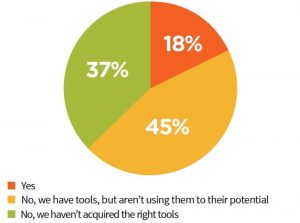A few months ago Google issued a warning that it would be updating its algorithms on the 21st of April in order to make sure mobile users had a better internet experience. This might sound like business as usual, given the Panda and Penguin updates of last year, but when Google issued a statement warning that this would have a ‘significant’ search ranking impact, and even supplied tools to help websites get up to date, alarm bells starting ringing in the world of digital marketing. Here’s a brief look at the shock wave this latest update sent out, and how people are coping with it.
The hard sell
It makes sense to start by talking about why Google are making a concerted effort to force people to update their websites for mobile devices. Data collators Branding Brand recently showed that Google search is responsible for almost 50% of all smartphone internet traffic. With that in mind, the websites that aren’t optimised for mobiles are losing Google a large chunk of potential revenue (as well as harming the businesses involved, and presenting a minor irritation to users). The reason Google wants to force the change so aggressively is also clear: it’s estimated that as many as 50% of major business’ websites aren’t properly optimised for smartphones, despite there being dramatic growth in smartphone use year on year. If companies won’t take the hint, Google has to take the initiative.
Iceberg right ahead
So how much of the panic surrounding Google’s latest update is justified? To be fair to Google, they have warned people this time around. But optimising not just every homepage, but every individual page, is a fairly daunting task, and one that not everyone could do in time for the deadline. The result is that some websites, such as reddit and tested.com, have seen their search engine rankings suffer following the changes. Others, such as British Airways and Barclays, have seen individual webpages drop in rankings, depending on what they missed during the spring clean. The impact on smaller businesses is much harder to measure, but it’s clear that Google’s new webcrawler penalises any page that doesn’t come up to scratch with impunity.
Emergency measures
So what can people do to keep their website ahead of the purge? The good news is that it’s very easy to see where your webpage is falling short. Google has established it’s own mobile friendly testing tool which requires only a URL to give you a full troubleshooting report. It’s also worth nothing that this latest update shouldn’t affect desktop search rankings, but even if you don’t receive a lot of smartphone traffic it’s still a good idea to keep up to date with these requirements, just in case Google gets more stringent in future.
Closing thoughts
The general message from all of this is that it’s crucially important to pay attention to what Google is up to, especially if they start issuing ultimatums. The full impact of these latest changes remains to be seen, but as long as you check out your compatibility in good time you should be in the clear.
(222)




